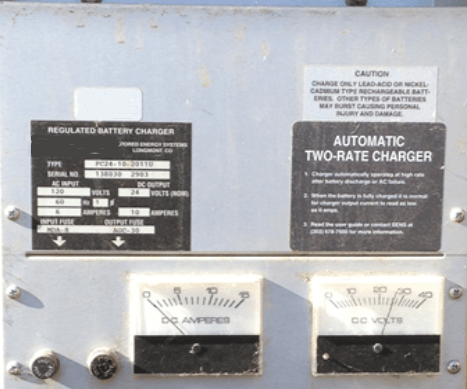PART II – HEALTH CARE FACILITIES CODE REQUIRMENTS
K-916
Remote Annunciators
Commentary by Paul Harris
I will be breaking down this K-Tag for healthcare facilities.
The highlighted area is the portion I will provide commentary on.
The full K-Tag:
K-916
Electrical Systems – Essential Electric System Alarm Annunciator
A remote annunciator that is storage battery powered is provided to operate outside of the generating room
in a location readily observed by operating personnel. The annunciator is hard-wired to indicate alarm
conditions of the emergency power source. A centralized computer system (e.g., building information
system) is not to be substituted for the alarm annunciator. 6.4.1.1.17, 6.4.1.1.17.5 (NFPA 99)
” A remote annunciator that is storage battery powered ” …..
What this means:
Storage battery powered does not mean battery backup.
The remote annunciator is “hard wired” to the generator’s cranking battery through the generator’s control panel.
The cranking battery is closely monitored by the battery charger and the remote annunciator if NFPA 110, 2010 Edition, Chapters 5.6.4.6 / 5.6.4.7 / and table 5.6.4.2
(Right now, my website deals primarily with NFPA 110, Chapter 8 – Routine Maintenance and Operational Testing)

Look at these two battery chargers here

..” to operate outisde of the generating room in a location readily observed by operaing personnel. ”
What this means:
The annunciator cannot be mounted in acloset, behind doors, or in a generator room. In practice, it should be in an occupied part of the building in order to be readily observable.
We have moved annunciators to occupied parts of a building after a wing was shut down and no longer regularly occupied.
” The annunciator is hard-wired to indicate alarm conditions of the emergency power source. ”
What this means:
An annunciator may not use Wi-Fi to signal a fault.
In older systems individual wires conduct fault signals to the annunciator. Recently manufactures use a USB connection, but it is still solidly wired.
“ A centralized computer system (e.g., building information system) is not to be substitited for the alarm annunciator. 6.4.1.1.17 / 6.4.1.1.17.5 (NFPA 99) . “
What this means:
Centralized computer systems may be used as auxiliary, but they cannot replace the hard-wired source for alarm signals.
Our Legal Disclaimer:
All information expressed by Standby Power Solutions, LLC or its officers is strictly the opinion of Standby Power Solutions, LLC.
Standby Power Solutions, LLC disclaims any liability for any personal injury, property, or other damages of any nature whatsoever, whether special, indirect, consequential, or compensatory directly or indirectly resulting from the publication, use of, or reliance on this website or any information derived thereof. Standby Power Solutions, LLC also makes no guaranty or warranty as to the accuracy or completeness of any information contained herein. Anyone using this website should rely on his or her own independent judgment, or as appropriate, seek the advice of a competent professional in determining the exercise of reasonable care in any given circumstances. ©2021 by Standby Power Solutions, LLC. All rights reserved. Do not reproduce without express written permission.